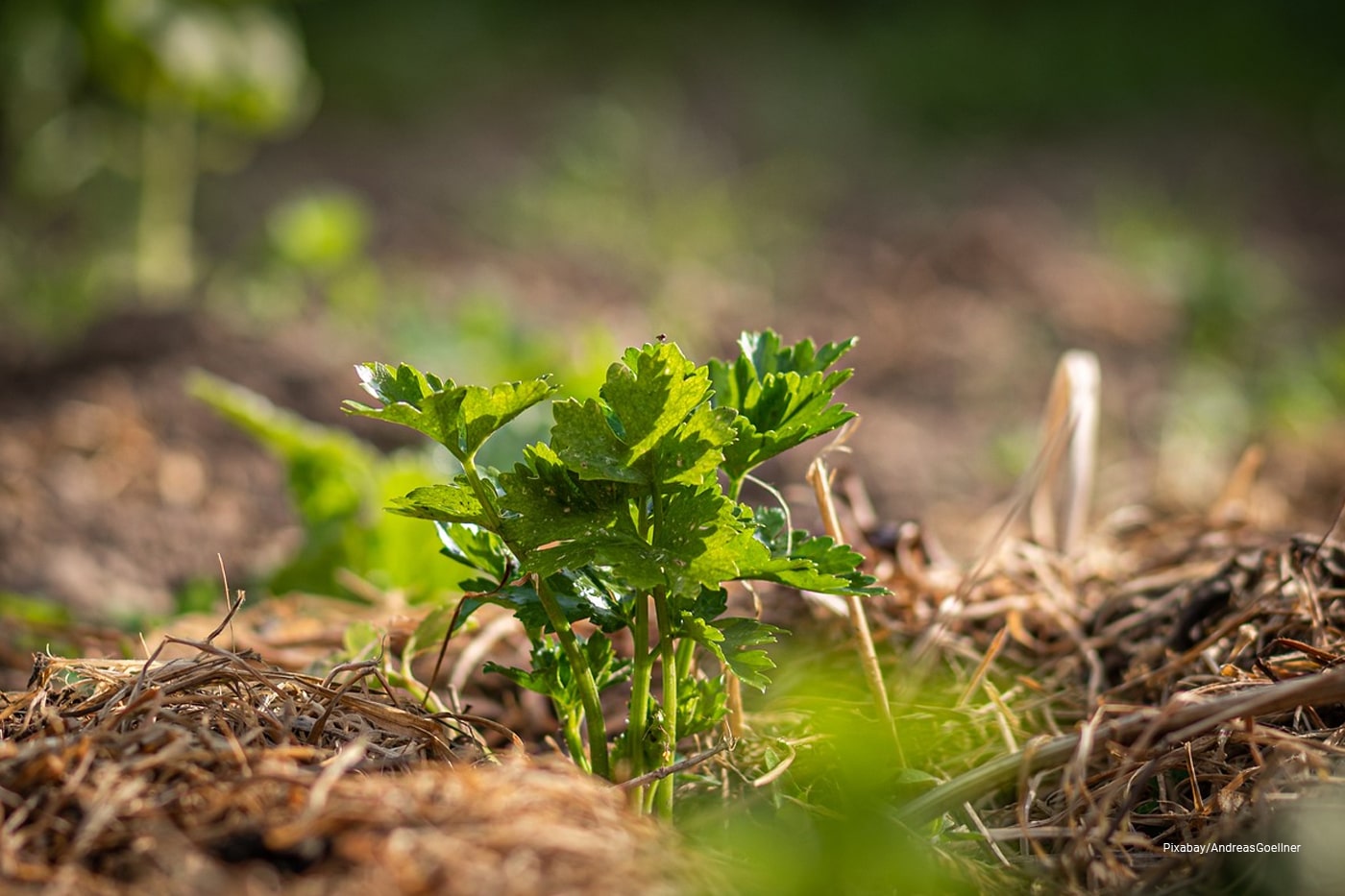Fall gardening involves preparing your garden for the cooler months by harvesting summer vegetables, removing weeds and annuals, tending to perennials, and preparing the soil for fall plantings. You can grow various crops in the fall such as arugula, beets, broccoli, Brussels sprouts, cabbage, cauliflower, lettuce, peas, radishes, spinach, and Swiss chard.
During fall season, mulching is important because it insulates the soil, creating a warmer environment for beneficial organisms like earthworms and microbes to remain active. This insulation helps protect plant roots from extreme temperatures and harsh winter conditions, promoting a healthier lawn and ensuring it thrives in the spring.
Contents []
Benefits of Mulching in Fall

Mulching is an important practice in fall gardening that helps prepare your garden for winter and ensures healthy soil and plants come spring. Here’s why mulching is so important in the fall and how to apply it properly:
- Temperature Regulation: Mulch acts as a natural insulator for the soil. It helps to moderate soil temperature by keeping the ground warmer during the cold months and cooler during unexpected warm spells. This protects plant roots from freezing and thawing cycles, which can damage them.
- Moisture Retention: Mulch helps to lock in soil moisture by reducing evaporation. This is especially important in the fall when rains might be less frequent, and it helps the soil retain water until winter snows provide natural moisture.
- Weed Suppression: Similar to using landscape fabric, applying a thick layer of mulch can prevent weed seeds from germinating, minimizing competition for nutrients and space with your plants. Fewer weeds in the fall mean less work in the spring.
- Soil Health Improvement: Organic mulch breaks down over time, adding nutrients to the soil. It also encourages earthworms and beneficial microorganisms, which help improve soil structure and fertility.
- Erosion Prevention: Mulch stabilizes the soil, preventing erosion due to wind and rain. This is especially important in bare spots where plants have been harvested.
- Disease Reduction: Mulch can help prevent soil-borne diseases by creating a barrier between plant foliage and the ground, reducing the risk of fungal infections and other issues.
Types of Mulch that are Best for Fall Application

When choosing mulch for fall application, consider the following types:
- Wood Chips or Bark Mulch: These are excellent for insulative properties and can help suppress weed growth. They also break down slowly, providing long-lasting benefits.
- Straw: A great option for vegetable gardens, straw helps insulate soil and protect plants. It’s lightweight and easy to apply.
- Leaves: Shredded leaves can be an effective and cost-efficient mulch. They provide organic matter as they break down and help retain moisture.
- Cocoa Mulch: This mulch is aesthetically pleasing and can deter some pests. However, be cautious if you have pets, as it can be toxic to dogs.
- Pine Needles: Acidic in nature, pine needles are ideal for acid-loving plants like azaleas. They do not mat down easily and allow water to penetrate.
- Compost: Applying a thin layer of compost in the fall enriches the soil and provides nutrients as it breaks down over winter.
- Rubber Mulch: This synthetic option is long-lasting and effective for moisture retention and weed suppression, although it doesn’t contribute nutrients to the soil.
Choose mulch based on your specific gardening needs, plant types, and aesthetic preferences.
How to Properly Apply Mulch in the Fall

Proper mulching in the fall involves several steps to ensure that your plants and soil benefit from the mulch. Here’s how to do it:
- Choose the Right Type of Mulch: Organic mulches, like straw, shredded leaves, compost, or wood chips, are ideal for fall mulching. They not only provide protection but also enrich the soil as they decompose.
- Apply to the Right Depth: Spread mulch 2-4 inches thick. Too little may not provide sufficient protection, while too much can suffocate the soil or create a breeding ground for pests and diseases.
- Keep Mulch Away from Plant Stems: Leave a few inches of space around the base of trees, shrubs, and perennials. Mulch piled up directly against stems can lead to rot or provide cover for pests.
- Time It Right: Apply mulch after the first hard frost. This ensures that the ground is cool enough, which helps prevent rodents from nesting but early enough to trap warmth before the deep cold sets in.
- Renew as Needed: If your mulch settles or decomposes too much during the winter, you can add more in the early spring to maintain its benefits.
By following these guidelines, mulching in the fall can greatly benefit your garden, helping protect your plants and soil during the winter months and setting the stage for a healthier, more vibrant garden next year.



